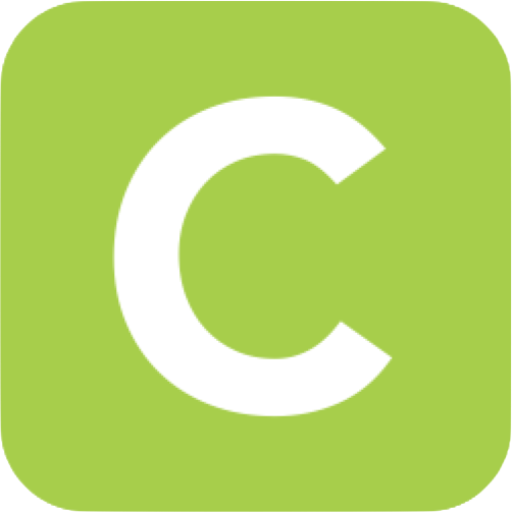
10 Jun Five Trends in Bridging Education and Employment
I was honored to participate in the George Mason University (GMU) Visioning Lab yesterday. Organized by President Angel Cabrera, and facilitated by Priya Parker, the day was framed around bold ideas for GMU to help students become 21st Century Mason Grads.
The visioning lab thirty-three attendees included diverse perspectives, backgrounds, and cross-sector experiences that led to a rich and vibrant conversation on the role and goals of higher education. Among the many topics raised throughout the day, I particularly enjoyed participating in five threads centering around education and employment.
Thread #1: Tension between job ready and lifelong learner. Both Philip Auerswald and David Carter made great points on the need to consider lifelong learning. Often, I hear lifelong learning being put forth as a goal that somehow excludes helping students be job ready by graduation. These two are not mutually exclusive, one can become a lifelong, job ready, graduate. GMU, as well as universities around the world, are faced with the challenge of helping their students understand and articulate the skills they gain through their education in terms employers will want to pay for. The debate between job ready and lifelong learning also varies by degree program and majors. It is most prominent among faculty, staff and university presidents in liberal arts degree programs. In contrast, it is almost non-existent in other degree programs (e.g. business, game design). No matter which degree a student pursues, students are not prepared to fully articulate their skills, sector/culture preferences, and impact/industry priorities in a way that helps them best compete for 21st Century jobs:
-
- Undergraduate and graduate degrees in business or in Technology, Engineering, and Math (STEM) fields predominantly focus on skills and technological knowledge graduates need to succeed on a number of jobs. However, these degrees often fall short in terms of helping students define their culture/sector priorities and impact/industry preferences.
-
- Specialized degrees and certificates in public affairs, nonprofit management or business administration are legacy degrees that focus on best practices in specific sectors, but often fail to help students refine their impact/industry preferences, as well as articulate their transferable skills and knowledge.
-
- Liberal arts degrees help students become fluent and effective at researching complex issues at the impact/industry level. However, they fall short at helping students understand and translate the employable skills in terms that employers will understand and value.
Our triple fit assessments help students become fluent at all three levels of the employability equation (skills, sector/culture, industry/impact). This allows them to learn and use the industry-specific terminology they need to convince employers to hire them.
Tread #2: Graduate and hustle afterwards. Several of the GMU students and alumni in attendance described their college experience as “I graduated and then looked for a job.” This is a predominant view among college students and professors. It might have been a reasonable assumption thirty years ago, but in today’s job market, this belief would be equivalent to telling high school students to graduate and then try and get admitted into a good university. Universities, especially those like GMU that have a significant proportion of first generation students on their campus, play a critical role in helping students remain accountable as they formulate how they will turn their education into employment (or graduate study, or a fellowship program). An open question for GMU and universities around the country remains around how to do so without pushing students to focus on salary or employment prestige as the primary measures of success at graduation. We are working on a senior springboard program designed to help juniors and seniors optimally design and implement whatever post-graduation plans they want to pursue.
Thread #3: Perspective expansion & failing forward. GMU’s College of Humanities and Social Sciences’ Dean Debbie Boehm-Davis and Director of Development Kelley McCaskill emphasized the importance of opportunities for students to both expand their perspective and iterative opportunities to fail (without failing too miserably). Mark Fernandes from Luck Company made excellent points on consequential learning in corporate contexts that aligned with these ideas. Experiential learning opportunities have long been used to respond to these needs. Whether through service-learning offerings to get involved in the community, by studying abroad, and more recently by participating in an incubator experience as an aspiring traditional or social entrepreneur, students have numerous opportunities to expand their perspective and grow as self-aware, global citizens.
But offering more experiential opportunities does not mean offering better educational experiences to students. Students are busier than ever, but they still are unable to articulate how these experiences fit into their post-graduation plans. In addition to offering a diverse set of experiential learning opportunities, I would suggest that universities set up mechanisms through their academic and career advisors so students can set up 80/20 learning journeys. 80/20 learning journeys would have 80% of each student’s courses, experiential learning and internship pursuits aligned with their current post-graduate goals, and 20% of their semester for stretch classes and surprises. Several of our university clients have been using our triple fit assessments (and especially our passions mosaic exercise) to help students develop their 80/20 learning journey and we look forward to reporting these results in future posts.
Thread #4: Reflection time. Related to the failing forward and learning journeys mentioned above is the necessity for built-in reflection. Currently, students keep busy, take a bunch of courses, go abroad, go to conferences, and get involved in a number of student organizations without strategically thinking about how each of these time and energy investments contributes to their personal and professional goals. More is not better, better is better. Providing students with built-in reflection and processing time on how their previous semester has contributed to their growth and how they will align their courses, experiential learning goals, and internship or job search efforts based on their updated awareness and goals would go a long way in helping students maximize their college experience and outcomes. I would suggest Marshall Goldsmith’s feedforward approach in this area, as well as iterative orientation programs that engages students each year of their education to take stock of what they have learned and how they will translate their 80/20 learning journey into their post-graduation plans.
Thread #5: High alignment mentoring. Everyone at the Visioning Lab agreed that mentoring and advising are key in one’s learning journey. During our group brainstorm, Zack Marom made great points on how mentoring needs to involve accountability and a range of stakeholders beyond the university. It is important to remember though that the same mentor can be a great mentor for one student and a horrible one for another student. Great mentoring relationships stem from a high alignment between the goals of a student and the work and personal experiences of the mentor. In an optimal mentoring relationship, both mentor and mentee have the same point B (career or personal goal) and the mentor’s role is to share best practices and tactics to help his or her mentee get to their shared point B faster and easier. For example, if a student is interested in innovative teaching methods, pairing him up with charter school teacher as a mentor is a great fit. High alignment mentoring relationships lead to high efficacy, and satisfaction for both mentees and mentors.
Unfortunately, high alignment mentoring relationships are rare in higher education. The issue is the assumption that any mentoring is better than no mentoring at all. This assumption is false: no mentoring is better than misaligned mentoring. Imagine the student interested in innovative education mentioned above matched with an experienced teacher who has been teaching the same subject in a conservative boarding school. The pieces of advice from his mentor might be a great fit within more traditional schools, but irrelevant or downright detrimental within the context of charter or progressive private schools. This happens even if the mentor has the best intentions. Indeed, anyone is biased towards believing that their path was a viable and valuable one. As a result, willingly or inadvertently, a majority of mentors will pass on their beliefs and assumptions to their mentees that are counterproductive to their growth.
Mentoring programs that are iterative and high alignment are needed to deliver optimal value to students and other university stakeholders. A way to do so would be to start each mentoring cycle with a meeting between a mentee and a trained coach to define each mentee’s top two or three goals for that cycle. Then each mentee gets paired up for a finite period of time with a mentor that has experience in one of the mentee’s top two prioritized goals. Throughout the process, the mentor and mentee receive tips and best practices on how to best frame questions and best practices to maximize an open dialogue within the mentoring relationship. At the end of the mentoring cycle, the mentee and mentor report back to the coach, and a new cycle is set up based on the mentee’s new set of goals. If the goals between the mentee and the mentor are still aligned, the relationship continues. If there is a divergence of goals and experiences, then the current mentee and mentor relationship ends and a new one is set up for the next cycle. Over time, some mentees will have multiple mentors, while some mentees will keep working with the same mentor over their learning journey. Balancing the breath and depth of the mentor pool needed to implement this program will be more costly at the onset. However, the benefits and mentor/mentee satisfaction will more than compensate for the higher initial costs.
Overall, forward thinking universities such as GMU have a unique opportunity to stop doing more and instead do better with what they currently have. President Cabrera and his team understand that, and I very much look forward to the 21st Century learning ecosystem they will create based on the ideas generated during and beyond the Visioning Lab.


